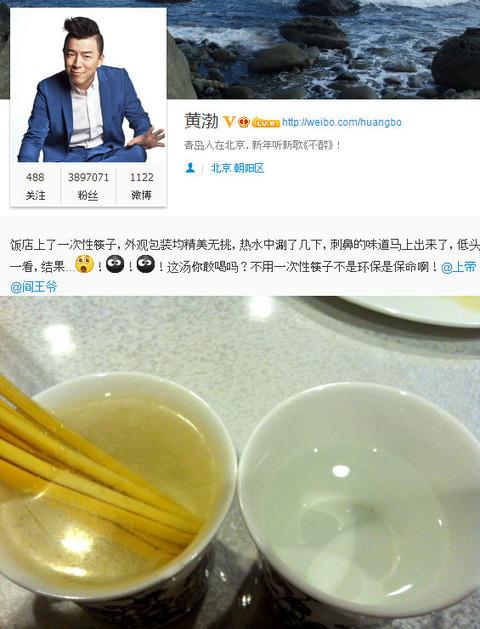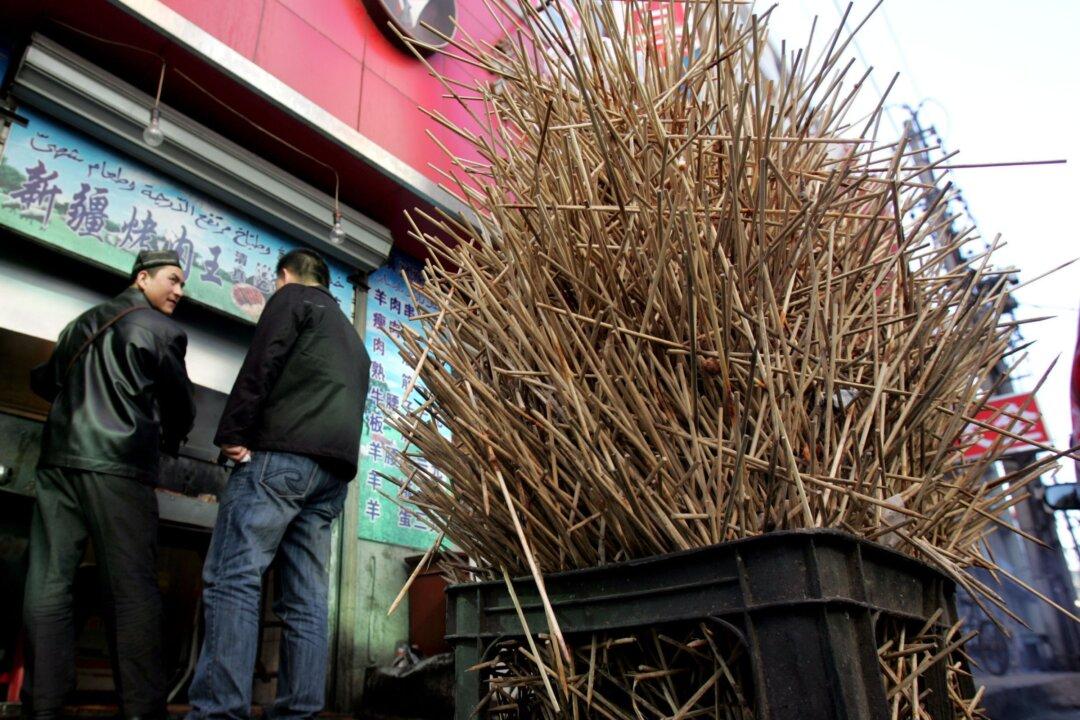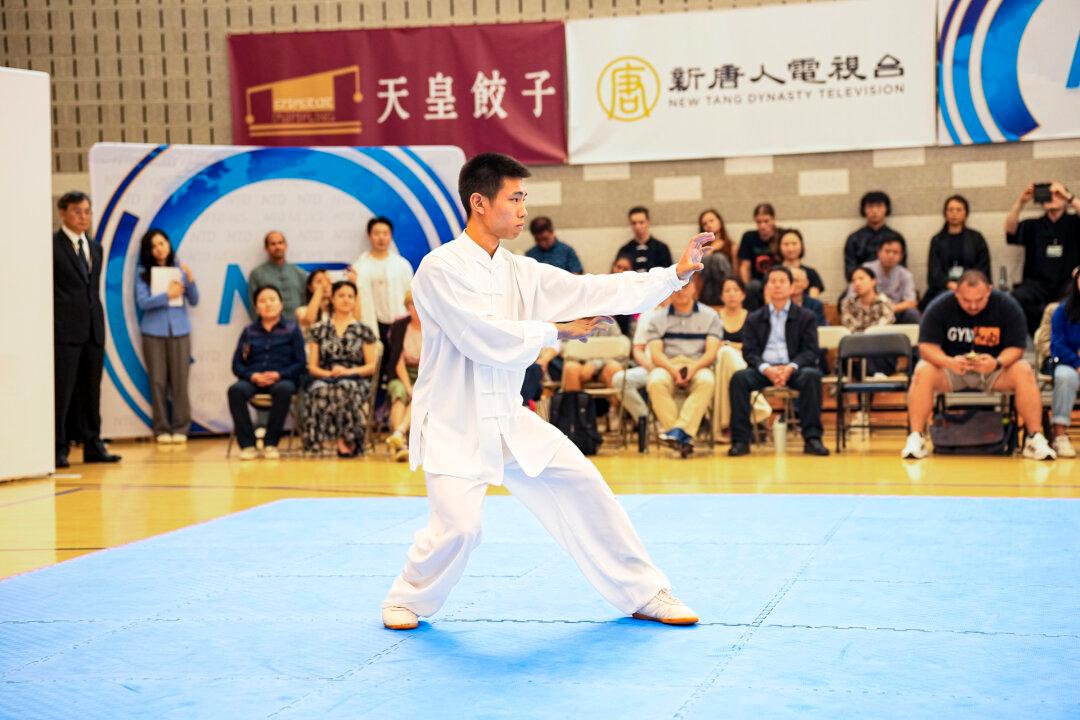If you’ve ever had Asian take-out, you’ve probably been given the option of chopsticks. But chances are those chopsticks are made in China with Chinese standards of production, and not the sort of thing you want anywhere near your food or your mouth.
Take a look at a test done in 2013 by Chinese social media star Huang Bo. Huang took a pair of nicely-packaged disposable chopsticks, put them in hot water, and this happened:

Huang Bo's post Sina Weibo





